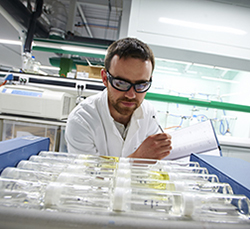Solvent Selection Guide

Solvents constitute the bulk of the materials used in the production of fine chemical and pharmaceutical products. Therefore, to limit the environmental impact of these products, solvent selection is paramount in reaction and process design and although many solvent selection guides are already in existence, there are many discrepancies between them and they generally do not provide guidance for bio-derived solvents, which have been increasing in popularity in recent years. The GCCE worked with Sanofi, Pfizer, GlaxoSmithKline and CTC Ltd to develop a unified solvent selection guide to promote the use of sustainable solvents also as part of the CHEM21 project. The new methodology is based upon a combination of Safety, Health and Environment criteria and physical properties, and in alignment with the Global Harmonised System (GHS) of chemical classification and European regulations. The guide allows bio-derived solvents for the first time to be assessed on a level playing field with their petroleum-derived counterparts. Solvents are also helpfully grouped into solvent families to make it easier to select ‘best in class’. Uniquely for a solvent selection guide, the guide itself is freely available allowing the user to rank any solvent of their choice via the same process via a user-friendly online tool.
More information and the background to the development of the methodology is available in an open access paper.
This guide has now been adopted by the ACS Green Chemistry Institute as its recommended method of selecting greener solvents.
The CHEM21 online learning platform, solvent selection guide and metrics toolkit were all developed as part of the IMI funded CHEM21 project (Chemical Manufacturing Methods for the 21st Century Pharmaceutical Industries). CHEM21 has received funding from the Innovative Medicines Initiative Joint Undertaking under grant agreement n°115360, resources of which are composed of financial contribution from the European Union’s Seventh Framework Programme (FP7/2007-2013) and EFPIA companies’ in kind contribution

